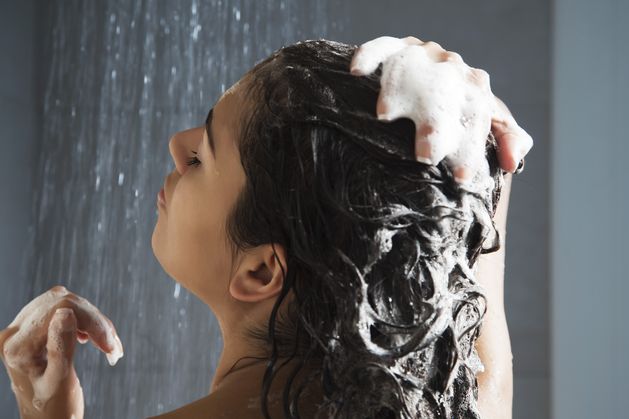Dr Grant replies: You may just have a very sensitive scalp. Is there a family or personal history of psoriasis, eczema or dermatitis? Seborrheic dermatitis is a common skin condition, and usually a mild form of dermatitis that often affects the scalp.
Seborrheic dermatitis may range in severity from asymptomatic to some mild scaliness of the scalp causing dandruff. More severe presentations can include erythematous (red) plaques with greasy-looking, yellowish scales (like cradle cap in infants). Itch (pruritus) is typically a feature in all forms of seborrheic dermatitis. You could try using over the counter Nizoral shampoo, which is an antifungal/antidandruff shampoo, twice per week. You need to build this into a lather on the scalp and leave in place for three minutes before rinsing out.
Another thing to consider is the hard water in your neighbourhood. The build-up of minerals can be seen on your glass shower door, and may also be contributing to your itchy scalp. Hard water contains calcium, magnesium, iron, copper and chlorine. All this, combined with leftover shampoo and other products, can build up, resulting in clogged hair follicles and an itchy scalp.
There is a product by HelloKlean called ‘clarifying scalp soak’, formulated with a low foam and slightly acidic pH of 4.0 that helps gently clarify the scalp from hard water residue and shampoo product buildup. It is made from apple cider vinegar (hence the low pH), fermented rice water (helps replenish protein and keratin in the hair) and phytic acid (an antioxidant) with the intention of treating itchy, flaky, sore, irritated scalps.
You could also try replacing your current shower head with a specific water-softening shower head to reduce your exposure to the hard water. There are many of these shower head products available online or in hardware stores.
Installing a water softener at your water main supply into your house would be a more expensive option and only to be considered if the above (less expensive) steps showed a clear benefit for your scalp.
If all else fails, then I would recommend a trip to your doctor for a complete history and a full skin examination, especially the scalp. The hair should be physically parted to allow for examination of as much of the scalp area as possible.
Other common scalp disorders include tinea capitis, and atopic dermatitis that often cause scaly patches or plaques. Tinea capitis is a dermatophyte infection also known as scalp ringworm that is a common cause of scaly scalp.
Atopic dermatitis is the most common type of eczema and it can affect the scalp and face, presenting with red, scaly patches, crusts and itch. In young children, there is a typical distribution known as flexural distribution, as it affects the elbow creases, the back of the knees, neck, wrists or ankles. Atopic dermatitis is associated with a family history of allergies, asthma, or eczema, collectively referred to as atopy.
Psoriasis of the scalp tends to appear as erythematous plaques with overlying silvery scale. Chronic plaque psoriasis is a common inflammatory skin condition and the most common presentation of psoriasis. Other sites that are commonly affected by plaque psoriasis include the knees, elbows, and lower back, but it can appear anywhere on the body. Some patients are more prone to developing psoriasis due to genetic predisposition/ a strong family history.
If the diagnosis remains uncertain, referral to a dermatologist should be considered for a scalp scraping or a biopsy, depending on the clinical scenario. There are still a number of other potential causes that are rare and additional laboratory studies may be of value in determining a diagnosis.
Dr Jennifer Grant is a GP with Beacon HealthCheck
